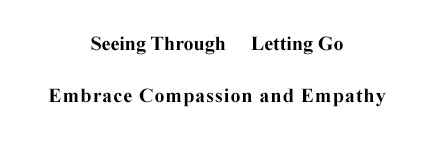After discussing Such is the Way of Dharma, we are pretty much done discussing Buddha’s teachings on reality, except in what scientists call the quantum realm, the equivalent of non-luminosity in Buddhism.
Non-luminosity is a busy domain in Buddhism because of most of Buddha’s core teachings, such as consciousness, duality, karma, fruition, delusion, etc. We will discuss them after verifying Buddha’s teachings in Such is the Way of Dharma. These verifications include the verifications of Citta, non-luminosity, the adventitious relationship between them, the consummate nature of the Ultimate Reality, and the two separate realms of reality. While the verification of Citta requires the experiences of the already enlightened, all others can be done using science.
Given that enlightenment experiences are rare, let us review what we have discussed so one knows what to expect when verifying Citta.
1) Enlightenment
In Astasahasrika-Prajnaparamita, Buddha defines enlightenment as “the thought of enlightenment is no thought since in its essential original nature is transparently luminous.”
Since the universe only manifests when mentality fluctuates, the enlightened person can be expected to experience the vanishing of the universe upon enlightenment when the mind is inactive. The vanishing of the universe is the hallmark of the Buddhist enlightenment. It is the moment when a person can truly appreciate the illusional nature of all existence and why Buddha teaches that the self-nature of the phenomenal world is “imputed,” “imaginary,” or “artificial.”
2) Emptiness,
Emptiness (Romanized Sanskrit=shunyata; Chinese=空), according to The Shambhala Dictionary of Buddhism and Zen, also known as “void,” is a “central notion of Buddhism….Shunyata is often equated with the absolute in the Mahayana since it is without duality and empirical forms.”
Emptiness is associated with Buddha’s teaching on the Two Types of Nonselves, which are the following:
- nonself of the person (Romanized Sanskrit=pudgalanairatmya; Chinese=人無我)
- nonself of the phenomena (Romanized Sanskrit=dharmanairatmya; Chinese = 法無我).
Therefore, in addition to experiencing the disappearance of all phenomena, the enlightened person should also experience the vanishing of his physical body.
3) Inconceivable
According to The Princeton Dictionary of Buddhism, inconceivable is “a term to describe the ultimate reality that is beyond all conceptualization.”
5) Suchness
As discussed before, Suchness is “a term for ultimate reality, especially in Mahayana schools. Along with terms such as “Dharmata, Dharmadhatu, and Bhutakoti …..referring to the eternal nature of reality that is “ever thus,” or “just so” and free of all conceptual elaborations.”
Suchness is Buddha’s way of saying that the Ultimate Reality is so hard to describe that the best way to describe it is just “ever thus” or “just so.”
Indeed, how do you describe that which “is beyond all conceptualization?” How do you describe something if you cannot see, hear, smell, taste, or touch it? How do you describe the place you are in if the universe and your physical self are absent from it? How do you describe yourself if, even when you cannot feel your physical self, you know your mental self is still there because you are aware you are in “Emptiness?”
Indeed, the enlightenment experience is one that the enlightened person will not easily forget. Consequently, the impact of enlightenment on the enlightened far exceeds learning it from Buddhist sutras or lectures.
6) Buddhadhatu
Buddhadhatu (Chinese=佛性), according to The Princeton Dictionary of Buddhism, is “in Sanskrit, “buddha-element,” or “buddha-nature,” the inherent potential of all sentient beings to achieve Buddhahood.“
Simply stated, the potential to achieve Buddhahood is one’s active mind. The potential is achieved when the person calms his mind down enough to be without thought and becomes enlightened.
7) Two Obstacles to Enlightenment
In his doctrine of the Two Obstructions, Buddha teaches that two significant obstructions to enlightenment must be overcome to be like him and complete his soteriological mission.
Obstructions are known in Romanized Sanskrit as avarana.
Avarana (Chinese=障), according to The Princeton Dictionary of Buddhism, is “in Sanskrit and Pali, “obstruction,” or hindrance.” “In Mahayana literature, two types of avarana are commonly described: “obstructions that are the afflictions,” or “afflictive obstructions” (klesavarana), and cognitive or noetic obstructions, viz. “obstructions to omniscience” (jneyavarana).”
Definitions of the two obstructions are as follows:
Klesavarana (Chinese=煩惱障), according to The Princeton Dictionary of Buddhism, is “afflictive obstructions.,” or, more literally, the obstructions that are the afflictions.” These afflictions arise from “mistakes in understanding generated by the cognitive obstructions, the individual engages in defiled actions, such as anger, envy, etc., which constitute the afflictive obstructions.”
Jneyavarana (Chinese=所知障), according to The Princeton Dictionary of Buddhism, is “in Sanskrit, “cognitive obstructions,” or “noetic obstructions, the second of the two categories of obstructions, together with the afflictive obstructions, that must be overcome in order to perfect the Bodhisattva path and achieve Buddhahood.” “Cognitive obstructions are treated as subtler hindrances that serve as the origin of the afflictive obstructions and result from fundamental misapprehensions about the nature of reality.”
Therefore, there is a causal relationship between the two obstructions.
- Afflictive Obstructions are “mistakes in understanding generated by the cognitive obstructions.” Because of misunderstanding, the person “engages in defiled actions, such as anger, envy, etc., which constitute the afflictive obstructions.”
- Cognitive Obstructions “result from fundamental misapprehensions about the nature of reality.”
In other words, some of the enlightened may be enlightened again.
8) Pervasiveness of the Ultimate Reality
As discussed earlier, Buddha teaches that the Ultimate Reality is spread throughout the universe. That Citta is spread throughout the universe means that enlightenment can happen to anyone, anywhere across the globe. We will use the enlightenment experiences of three people to demonstrate this when verifying Citta.


